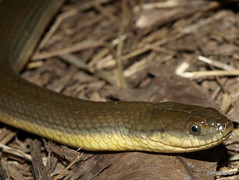 7am, and I'm walking the streets of Jorbagh. I'm not endowed with a good memory,and I was quite convinced I would not locate it.
7am, and I'm walking the streets of Jorbagh. I'm not endowed with a good memory,and I was quite convinced I would not locate it.But three years of roaming the streets seem to have seared themselves deep in the cerebellum (is that where its stored?) , and I was hit by deja vu in Delhi.
Here's the street we lived on, way back in the seventies. It hasn't changed all that much.
 And here's the maidan behind the temple, where my brother left his bike, overnight, and found it standing in the same place the next morning!
And here's the maidan behind the temple, where my brother left his bike, overnight, and found it standing in the same place the next morning! Oh and here's the temple itself. It was much more derelict in those days. See the bars behind the temple, well we girls used to use them as uneven bars, and swing from them and try all kinds of stunts, while the boys would run down that slope. (OK, OK, I was much smaller and slimmer in those days, you know.)
Oh and here's the temple itself. It was much more derelict in those days. See the bars behind the temple, well we girls used to use them as uneven bars, and swing from them and try all kinds of stunts, while the boys would run down that slope. (OK, OK, I was much smaller and slimmer in those days, you know.)Somehow, the temple-on-the-hill had seemed much higher in my memory than when I actually saw it this time, well I was shorter as well.
Was it an age of innocence, or am I just changed? As ten year olds, my parents considered it safe for me to roam the streets, confident that I would be back before sundown. I cant bring myself to do the same with my child now.
As I walked through Lodi Gardens, I remembered learning to cycle...barrelling into an old man, and falling down. The man was full of concern for me, while my parents were profusely apologetic to him. Politeness, concern and social connect all around.
Another cycling story. My brother, who was my tutor-in-chief, decided that it was high time I learnt to get off the cycle on my own. ( I couldn't), and the only way I would learn was if he did not come to my rescue. So, while I circled on the Lodi Garden lawns, he stood there with hands crossed across his chest, stubbornly ignoring my pleas to help me dismount. Round and round I went not knowing what to do, when a brainwave struck - I just let go off the handlebars! I was on the ground in a flash, with the cycle beside me all in a heap, grinning triumphantly. Said brother did look a trifle contrite.
And as I sat at breakfast, looking out of the window, a red-whiskered bulbul and a pair of oriental white-eyes kept me company.
 The red-whiskered bulbul, with his mohawk crest
The red-whiskered bulbul, with his mohawk crest Oriental white-eyes
Oriental white-eyes
 White-throated kingfisher - Photo by Mr Ramanan
White-throated kingfisher - Photo by Mr Ramanan

%2Bcopy.jpg) Photo by Preston Ahimaz
Photo by Preston Ahimaz%2Bcopy.jpg) Photo by Preston Ahimaz
Photo by Preston Ahimaz

